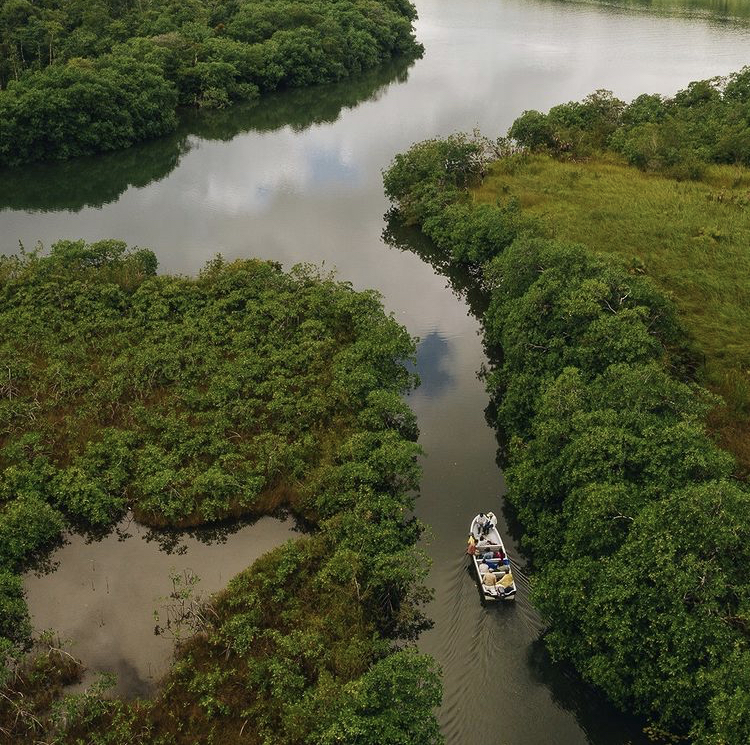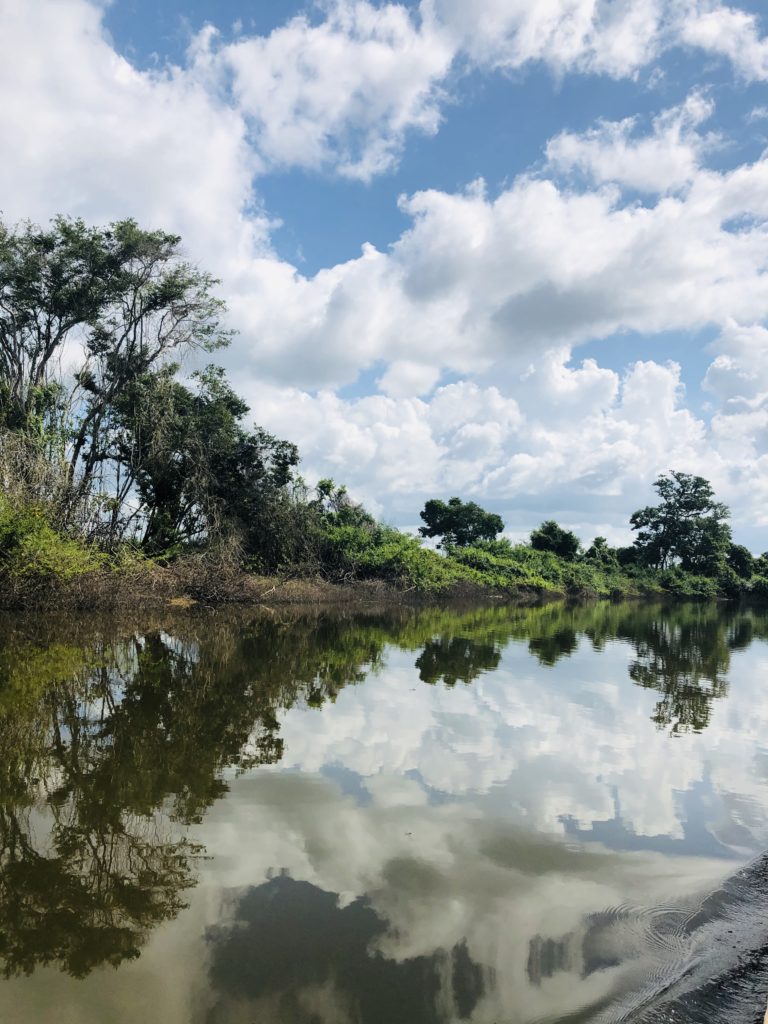Tropical forests or rainforests are located in the Intertropical Zone, between the Tropic of Capricorn and the Tropic of Cancer (look image 1), near the equatorial line. Its average annual temperature is generally above 24 ° C and its humidity is highly variable. They are considered megadiverse ecosystems because despite occupying just 3% of the planet’s land area, they host more than 50% of all species of microorganisms, fungi, plants, and animals (CONAP, n.d .; UNAM, 2019).

But the great diversity and characteristics of tropical forests are attractive not only for their beauty and uniqueness but also for the ecosystem services they provide to millions of people. These services are understood as the benefits that humans obtain from ecosystems and can be divided into (Balvanera, 2012):
- Provisioning. They are those services that can be consumed directly and include food, water, energy sources, construction materials, raw materials, and medicines, especially this last one. Tropical forests are an important source of medicinal plants, the extracts of which are used to process medicines and treat thousands of diseases around the world.
- Regulation or Maintenance. This includes carbon sequestration, climate regulation, regulation of the biogeochemical cycles, regulation of erosions and frequency of landslides, soil generation and maintenance of habitats, and many more processes. Tropical forests are important for mitigating climate change and supplying fresh water on Earth.
- Cultural. Tropical forests provide scenic beauty and the opportunity for ecotourism activities and depending on where you are, they also represent spiritual values. Some forests are considered sacred and center for the practice of different ceremonies.

Photography by: Haniel Lopez, 2020

Photography by: Vivian Hurtado, 2020
At first glance, we can understand the importance of the ecosystem services that tropical forests provide us, but when they are translated into numbers, we can visualize their magnitude. For example, the economic value of the forest within the Maya Biosphere Reserve in Petén for 2002 was approximately $ 195,543 per year, taking into account just Cedrela odorata and Swietenia macrophylla timber assets; the ornamental plant Chamaedroea sp; the latex of the Manilkara sp tree and the fiber of the liana Desmoncus sp.; the functions of carbon sequestration, erosion control, and nutrient cycling; and the biodiversity attribute (Sención, 2002). We can imagine that today these figures have increased and even more if we assess a greater number of species that are being used by local populations.
The Maya Biosphere Reserve (RBM, for its acronym in Spanish) constitutes the largest continuous tropical forest block in Guatemala, with a coverage of 1.31 million hectares. It is also the largest area of tropical forest under sustainable management in the country with 500,000 hectares in charge of 9 of the 11 forest concessions managed responsibly by the communities (CONAP, n.d.). The concessions within the MBR are recognized by the FAO and the UN as a conservation success story. An FAO report mentions that this model reduces emigration, increases job opportunities, and allows the development of community projects to maintain roads, sanitary services, and educational scholarships for children and young people in the communities. Currently, community forestry concessions in Petén directly benefit 14,000 people and indirectly 30,000 (Durán, 2020).
Unfortunately, this is not the case for all forests in Guatemala. According to data from the Institute for Research and Projection on Natural Environment and Society (IARNA, for its acronym in Spanish, Instituto de Investigación y Proyección Sobre Ambiente Natural y Social) (2012) for the period 2006-2010, 132,138 ha of forest were lost due to deforestation and the main causes on deforestation fronts, which add up to 42 % of all deforestation in the country is linked to the expansion of land for extensive cattle ranching, the expansion of monocultures, human settlements, forest fires, and drug activity. However, this is a problem shared with the other tropical forests of the world. According to FAO and UNEP (2020) large-scale commercial agriculture (mainly cattle ranching and soybean and palm oil cultivation) was the cause of 40% of the deforestation of tropical forests between 2000 and 2010, causing fragmentation in forests and loss of biodiversity. The same report mentions that “the resilience of human food systems and their ability to adapt to future changes depend on the same biodiversity” due to the different functions that each species performs in ecosystems.
The International Day of Tropical Forests is a day to remember its importance and to recognize that forests are not only the habitat of thousands of species but also the source of subsistence and obtaining raw materials for human populations. Models such as some forest concessions demonstrate that conserving the forest and benefiting from it is not only possible but also a growing need to counteract the damage that our planet’s Tropical Forests are experiencing.
Our FLAAR Mesoamerica team is working in the Yaxha, Nakum, and Naranjo National Park, and in the future, also at the other protected areas from the MRB, Petén. As well as in Livingston, Izabal, to document the incredible biodiversity that resides in their ecosystems. Learn more about our work by exploring our websites.
REFERENCES
- 2012
- Los servicios ecosistémicos que ofrecen los bosques tropicales. Ecosistemas 21
(1-2): 136-147.Available online:
http://www.revistaecosistemas.net/articulo.asp?Id=709
- n.d.
- 26 de Junio. Día Internacional de los Bosques Tropicales.
Available online:
https://conap.gob.gt/26-de-junio-dia-internacional-de-los-bosques-tropicales/
- 2020
- El experimento comunitario de Guatemala que enseña al mundo cómo conservar un
bosque. Mongabay.Available online:
https://es.mongabay.com/2020/06/guatemala-comunidades-que-conservan-el-bosque-fao/
- 2020
- El estado de los bosques del mundo 2020. Los bosques, la biodiversidad y las
personas. Roma.Available online:
http://www.fao.org/3/ca8642es/CA8642ES.pdf
- 2012
- Perfil Ambiental de Guatemala 2010-2012. Vulnerabilidad local y creciente construcción de riesgo. Guatemala
Available online:
https://www.url.edu.gt/publicacionesurl/FileCS.ashx?Id=40177
- 2019
- Bosques tropicales, los ecosistemas terrestres más biodiversos del planeta. Boletín
UNAM-DGCS-454 Ciudad Universitaria.Available online:
https://www.dgcs.unam.mx/boletin/bdboletin/2019_454.html
First posted, June 2021
Note by Vivian Hurtado, FLAAR Mesoamerica (Guatemala).

